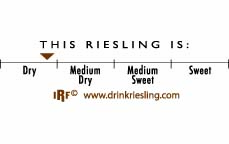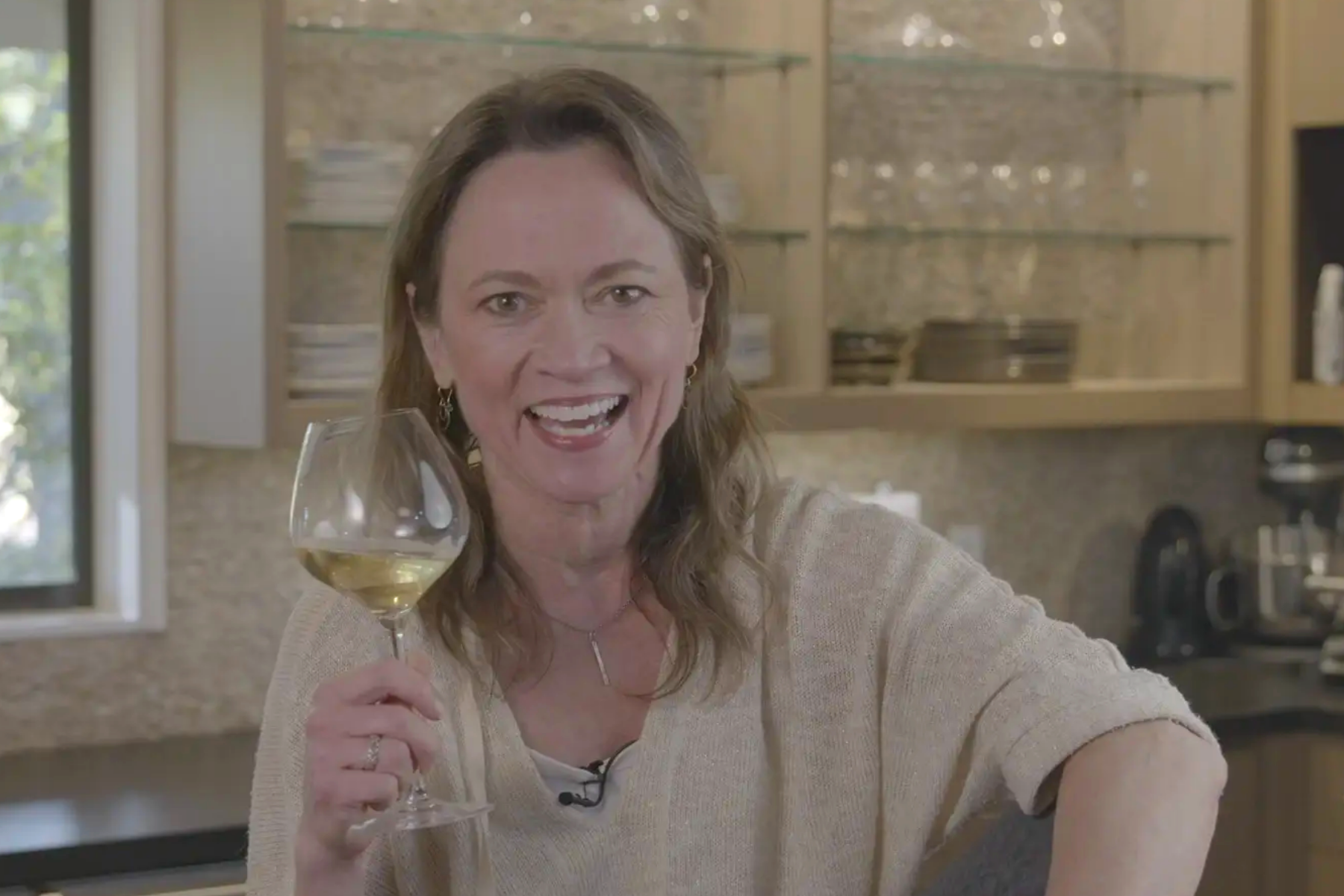Riesling: How Sweet (and Dry!) it Is
Since my last Riesling post following the Riesling Rendezvous 3 years ago, I have seen increasing acceptance of, and excitement about, Riesling – yay! It’s amazing how many regions around the world produce world class Rieslings. Here’s a quick tour of them:

[jwplayer player=”1″ mediaid=”30369″]
If you are a wine geek, or hang out with any of us, you know why sommeliers love Riesling. Very simply, it’s the complexity – how’s that for a turn of phrase? That means fruits from citrus to tropical, florals like honeysuckle and jasmine, palate depth and concentration without heaviness, and mouthwatering acidity. All of which makes Riesling delicious young but also very ageable if made by a great producer.
As a sommelier, I know what some consumers don’t love about Riesling – not knowing what you’re getting in terms of dryness or sweetness. Here’s a little help with that:
The International Riesling Foundation’s “taste profile” scale (shown above) was created to indicate the level of sweetness on wine labels for its member wineries, so check the back label. Keep in mind, both dry and sweet are on a continuum. Dry can mean bone-dry and tingly-tart like a squeeze of lemon, to juicy but still tangy like an orange or tangerine. Sweet can range from ripe-sweet, like a peak-season peach, to nectar-sweet like peach liqueur, to syrupy-sweet like peach jam. So if the label indicates sweet, either with the back label scale above, or a term like “off dry” or “semi dry”, it’s not going to be cloyingly sweet at all. And thanks to the racy acidity of Riesling, the sweetness sensation gets backed off to the point of just tasting fruity and juicy.
Another key to the sweet-versus-dry style is to understand the classic styles that are typical of the major Riesling regions. I’m including emerging ones as well, because there are some amazing, great value Rieslings coming from new or unsung vineyard areas.
The Classic Riesling Regions
Alsace, France – Historically a “jump ball” region (sometimes in the possession of Germany, sometimes France, who won out in the end. These Rieslings are typically dry. However, house style varies between “bone dry” to juicy and rich.
Germany – The whole country is a Riesling mecca, and most regions produce the full range of styles from bone dry, listed as Trocken, to juicy (kabinett or feinherb on the label), to off-dry (Spatlese) or medium-sweet (Auslese), to lusciously sweet (Beerenauslese or Eiswein).
Other Old World Riesling Regions – Austria is where it’s at, and the Rieslings from there are nearly always bone dry. The Wachau district is the most famous source, but Kamptal and Kremstal also grow great Rieslings. Italy’s Alto Adige district also produces some delicious Rieslings.
New World Riesling Regions
Washington State leads the charge, with Chateau Ste. Michelle the iconic Riesling, and the world’s largest Riesling producer. Their joint venture with Ernst Loosen, Eroica, is also stellar. Nearly all Washington Rieslings show the sweetness scale on the back, and/or label the wines as dry or off-dry.
Oregon – I think Riesling, rather than Pinot Gris, should be Oregon’s white wine calling card and the perfect complement to the gorgeous Pinot Noir reds. Look for Brooks and Trisaetum, both dry.
New York’s Finger Lakes district – This is a Riesling mecca, and has been for my entire career. The dry Rieslings from Trestle 31, Dr. Frank and Hermann Wiemer are iconic.
Australia’s Clare Valley and Eden Valley districts are justly famous for dry Rieslings with great verve and fruit precision in a typically bone dry package.
New Zealand’s Marlborough region is also producing lovely Rieslings. The bargain bottlings are typically off-dry, and the higher-end Rieslings more often on the dry side.
Canada – Look for great dry Rieslings from the Okanagan Valley, and of course the famous ice wines from Ontario province.
California – My home state is not a Riesling powerhouse but if you miss out on Napa Valley’s Trefethen and Smith-Madrone Rieslings, you are REALLY missing out.
Drink Riesling!







